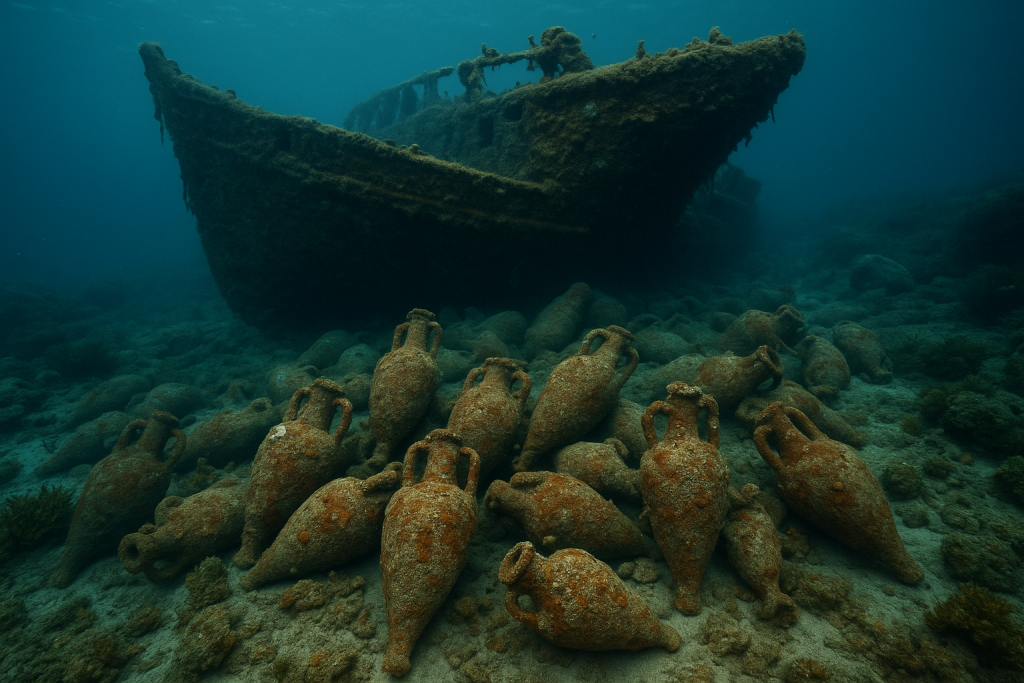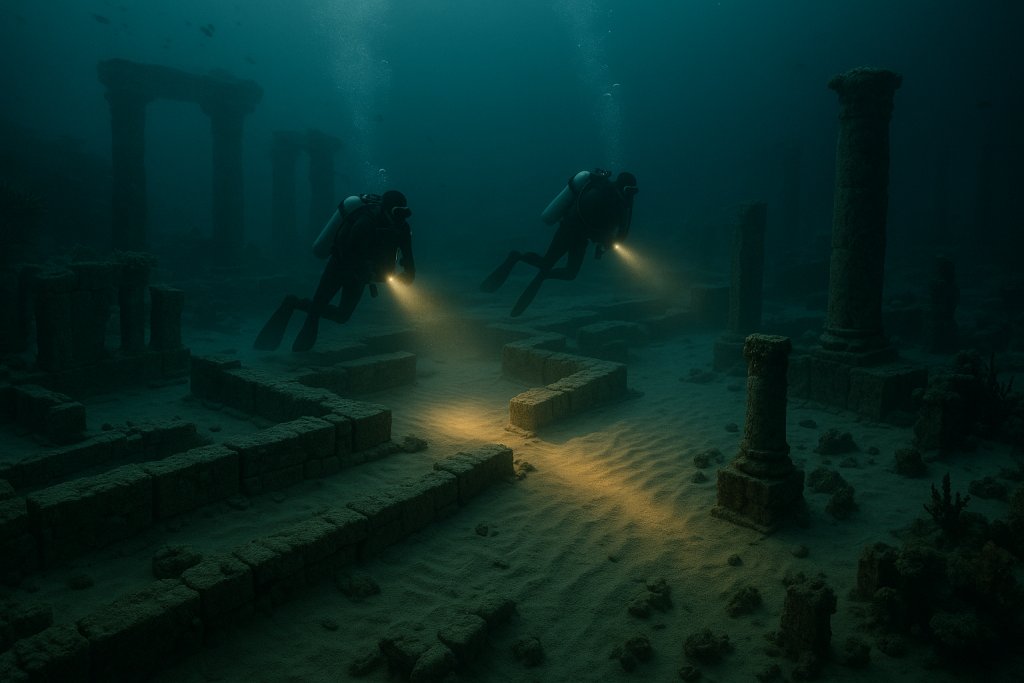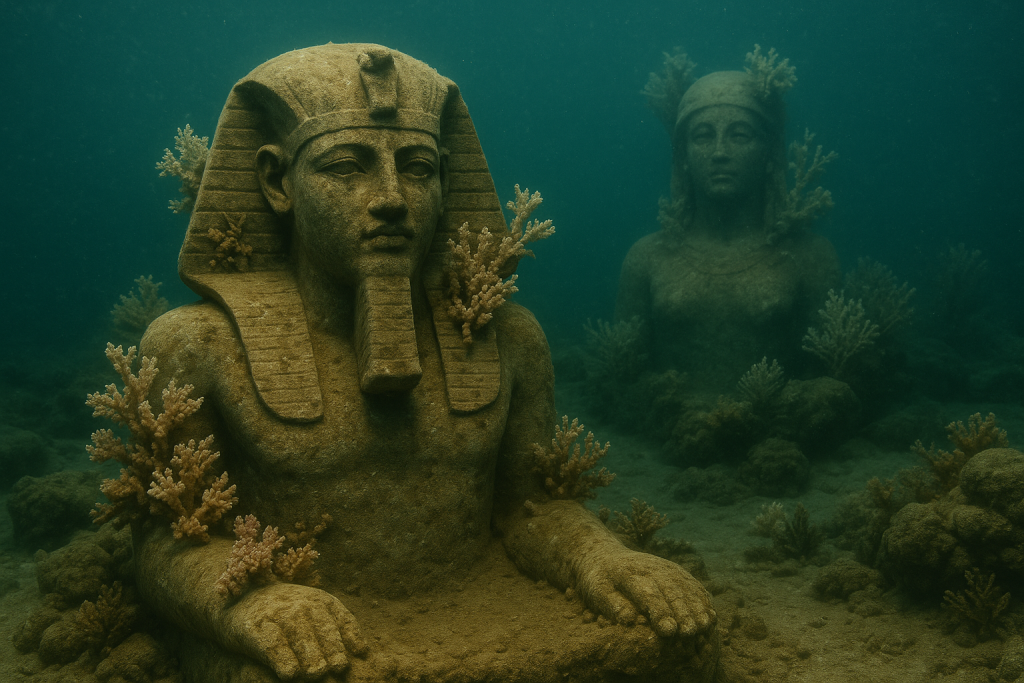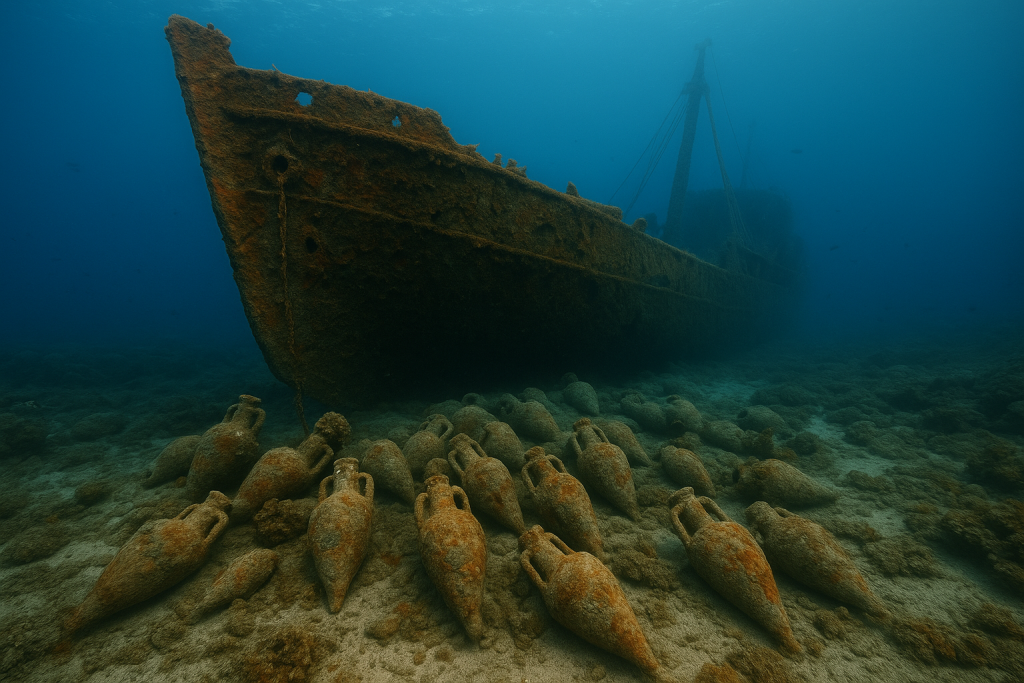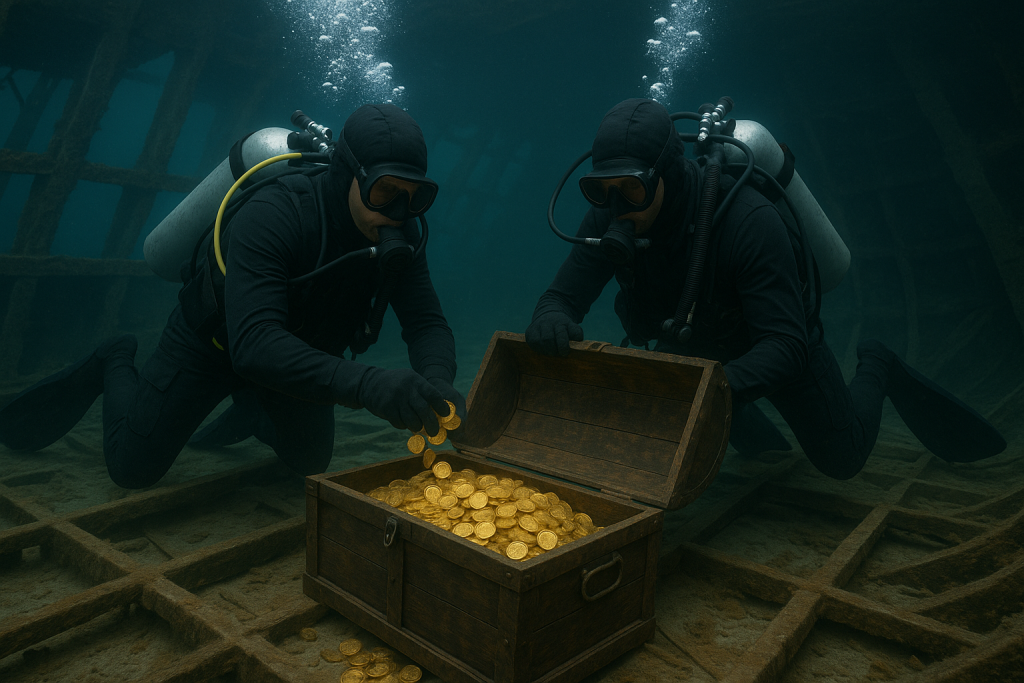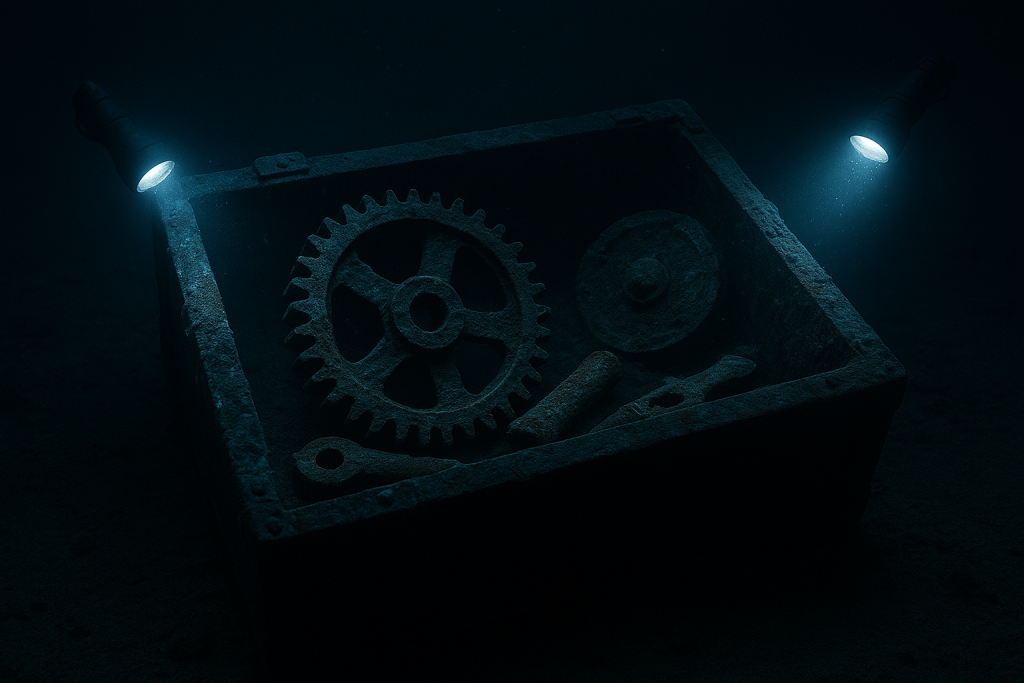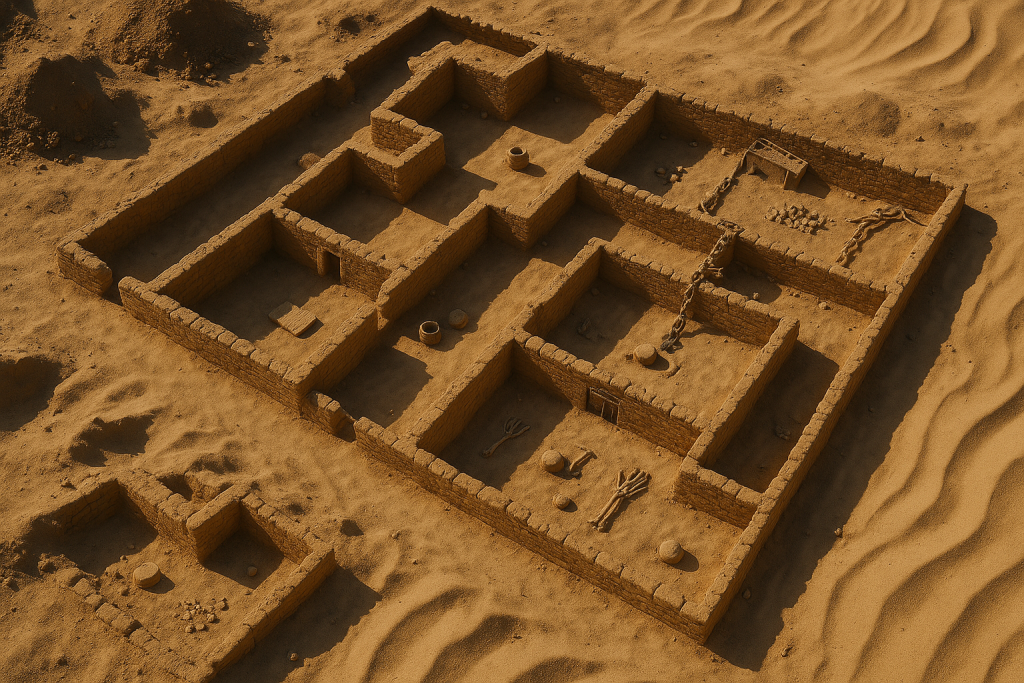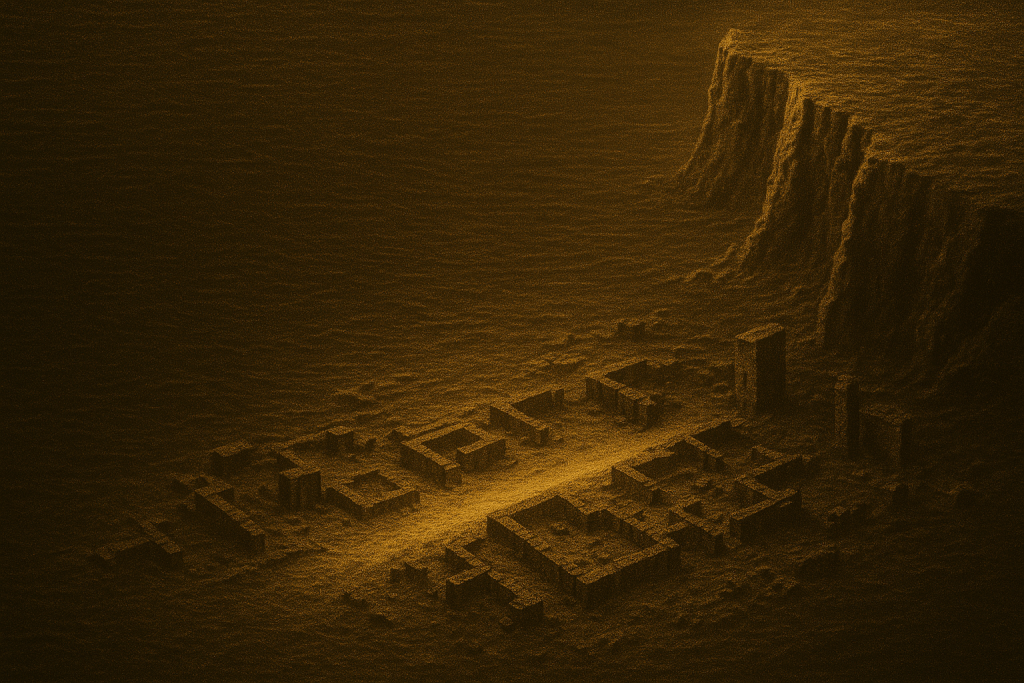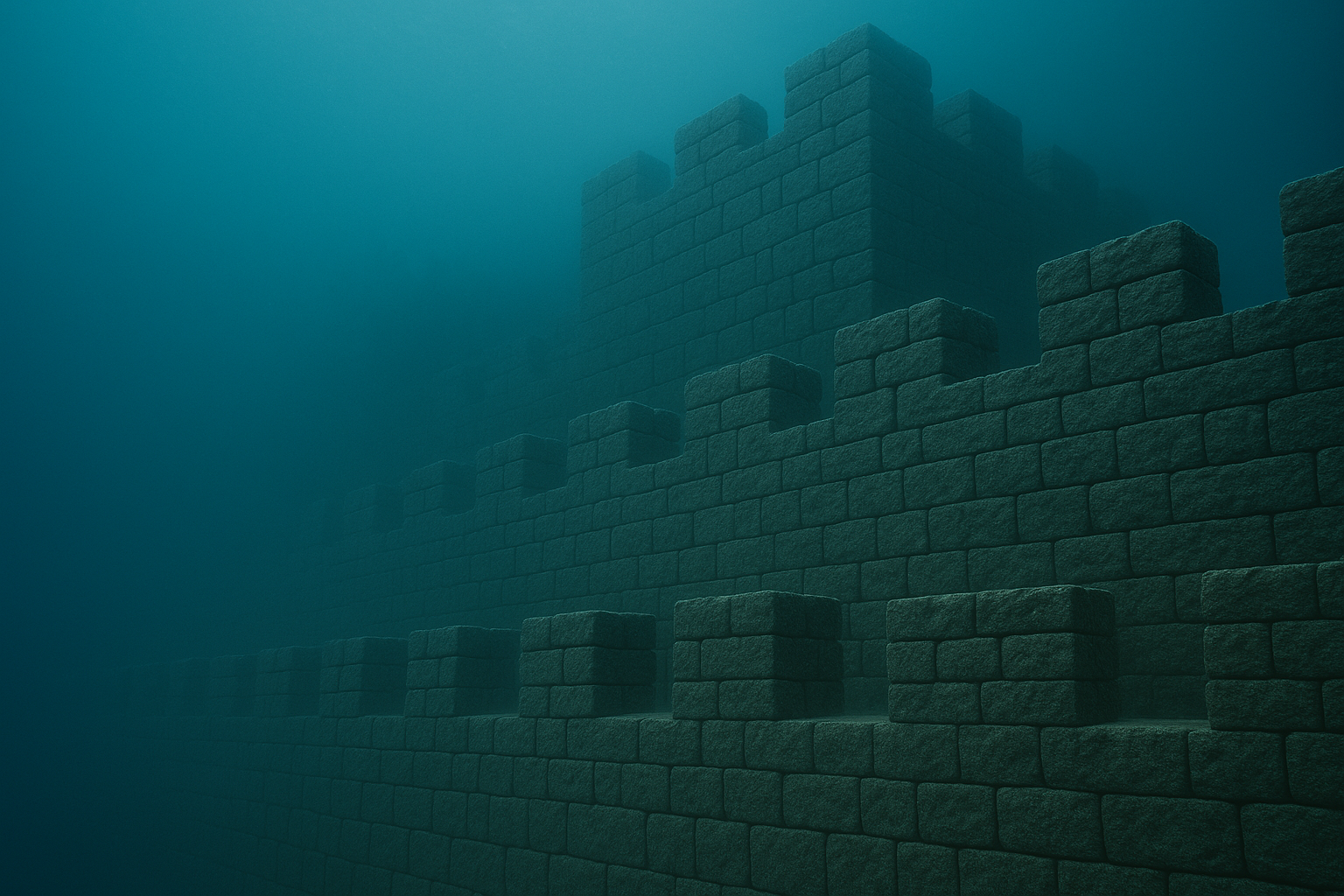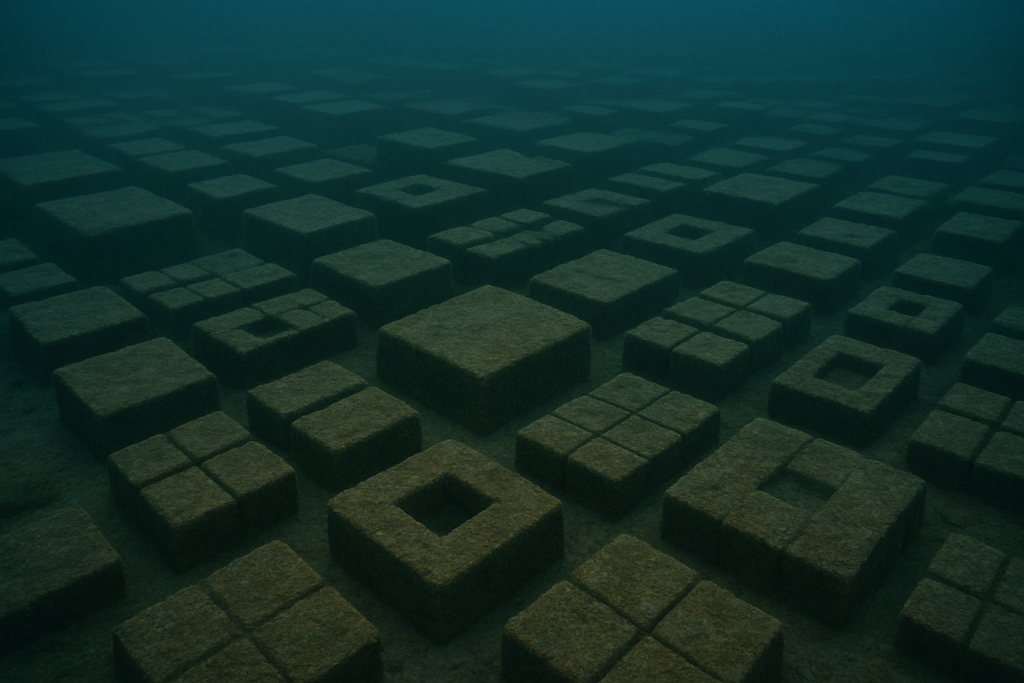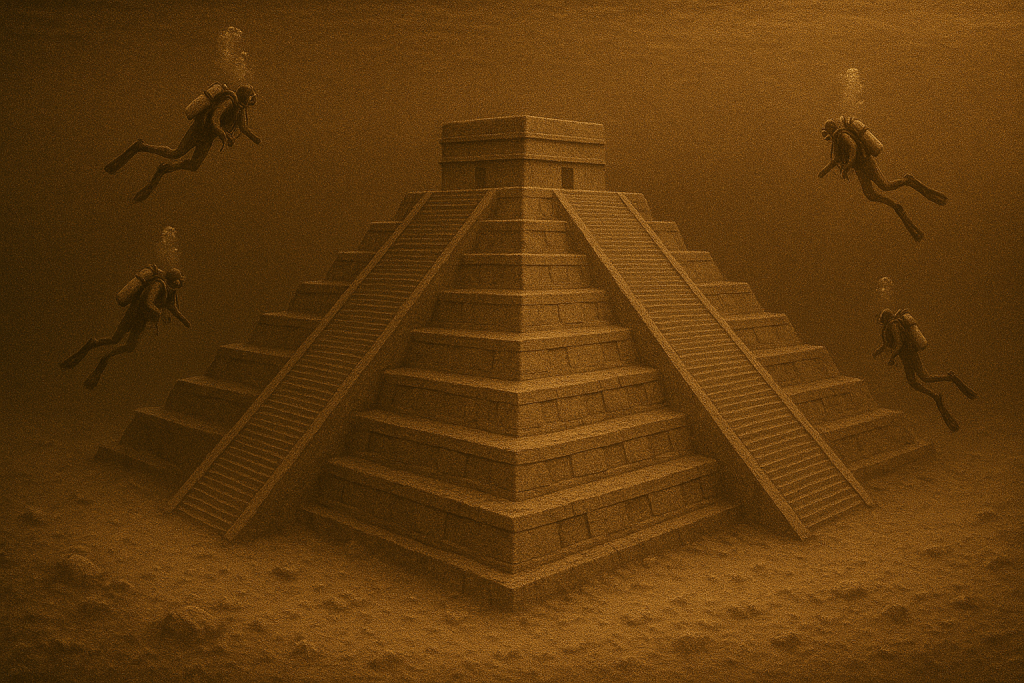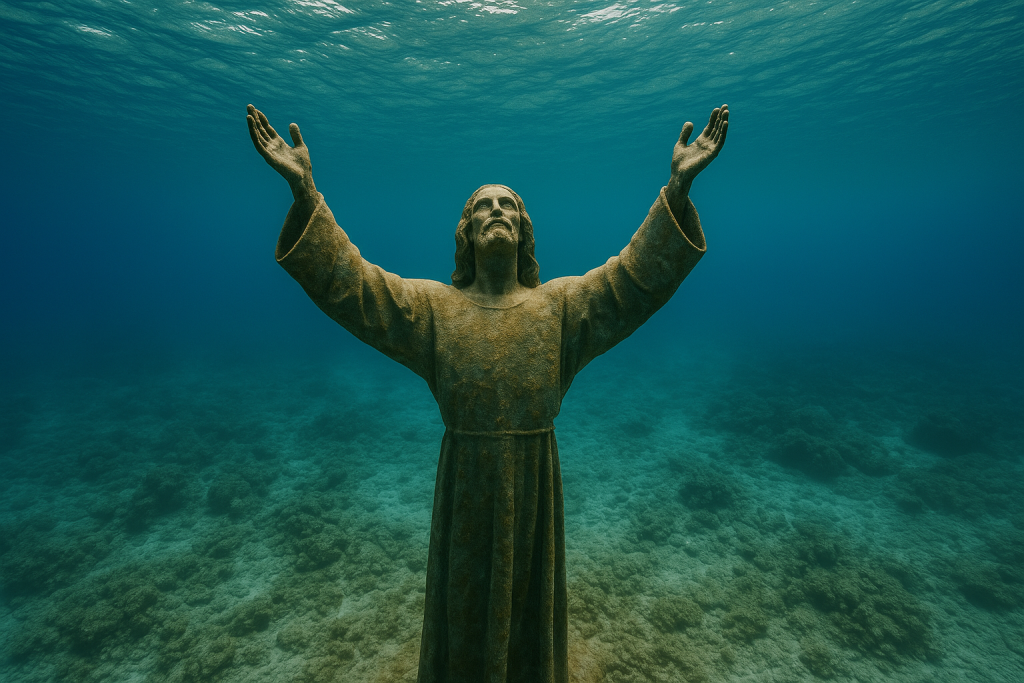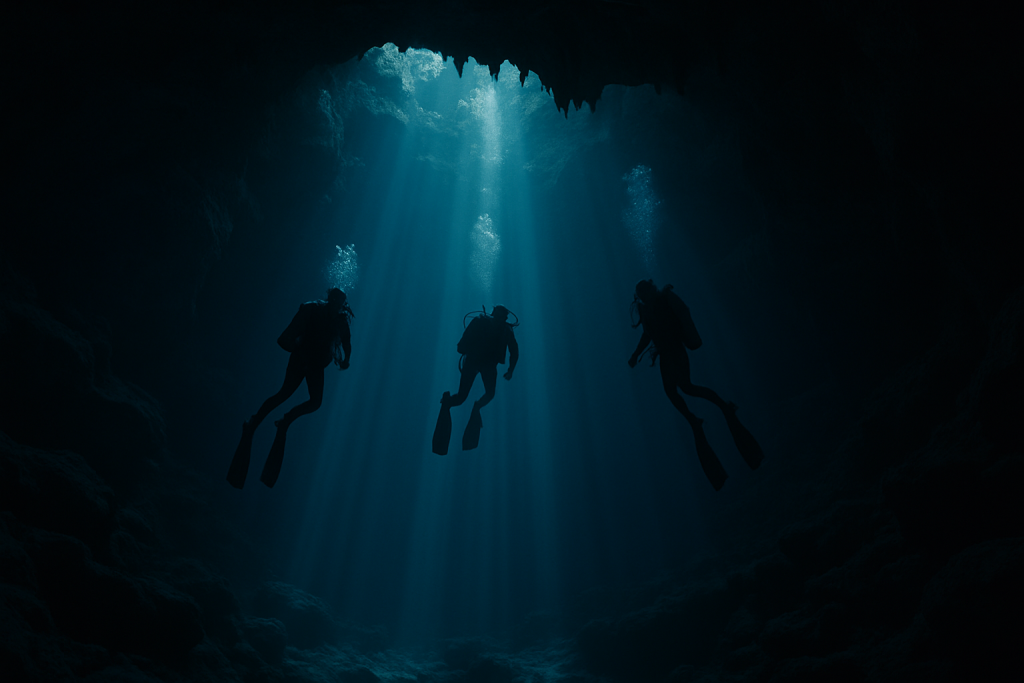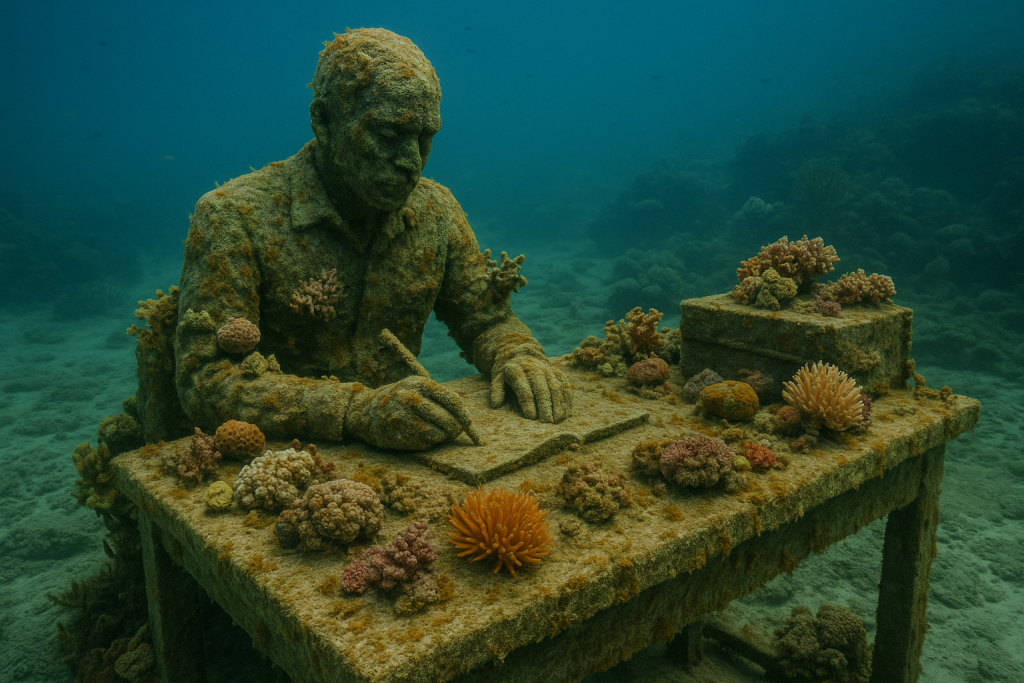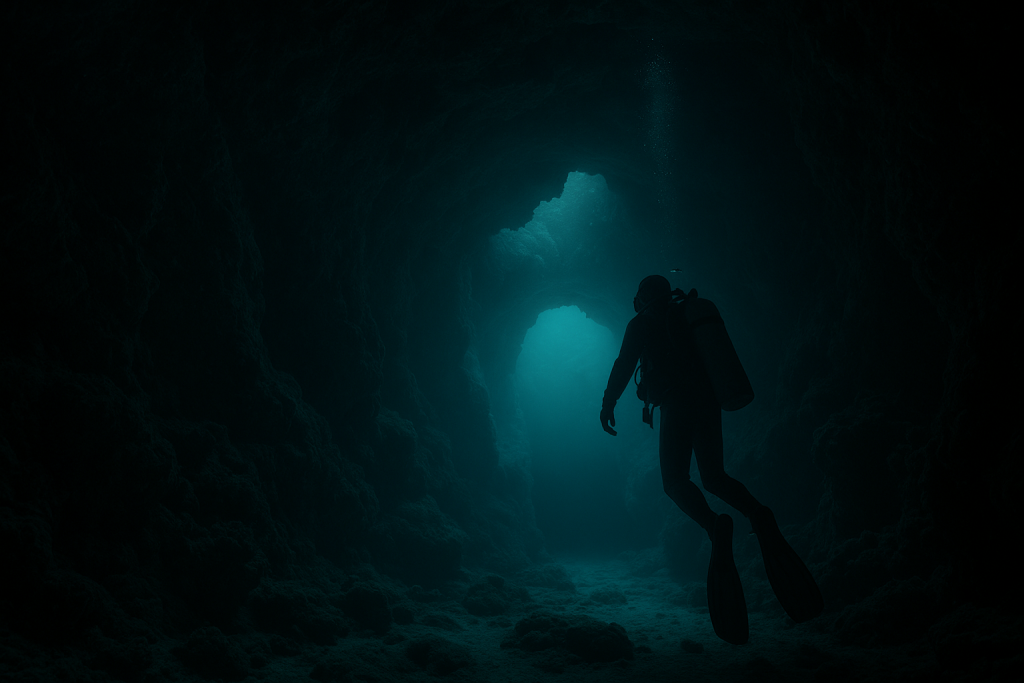We’ve Explored Land. But What Lies Beneath the Ocean Will Blow Your Mind
Sure, we’ve walked across deserts, climbed Everest, even landed on the moon. But the one place that remains largely untouched? The ocean. Over 70% of the Earth’s surface is covered in water, and 95% of what lies below is still a mystery. And what’s been found so far is enough to prove—there are forgotten cities, ancient treasures, and secrets buried deep beneath the waves.
The Lost City of Pavlopetri—5,000 Years Lost Beneath the Waves
Just off the southern coast of Greece, divers stumbled upon something stunning: stone foundations, streets, pottery shards, and even graves, all belonging to the lost city of Pavlopetri. Experts believe it was founded around 3,000 BC and swallowed by the sea due to earthquakes. It sat forgotten for thousands of years, just 3 meters below the surface.
Egypt’s Atlantis: The Forgotten Port City of Heracleion
Imagine diving just off the coast of Alexandria and seeing entire temples, statues, and ancient coins frozen in time. That’s what happened when Heracleion, a city thought to be a myth, was found 10 meters below the Mediterranean Sea. Earthquakes and tsunamis pulled it under—but what was preserved is nothing short of miraculous.
A Graveyard of Ships: 58 Ancient Vessels Found in Greece
Off the coast of Fourni in Greece lies Europe’s largest underwater shipwreck cemetery. We’re talking 58 shipwrecks dating from ancient Greece to the 20th century. Hidden 40 meters deep, these ships were untouched by looters, still packed with treasures and goods once destined for trade across empires.
The Baltic Sea Disaster That Hid $50 Million in Gold
In 1468, the Hanukkah Rome sank off the coast of Finland during a brutal storm. All 200 passengers perished—and so did over 10,000 gold coins. Today, that would be worth roughly $50 million. The wreck, preserved in icy waters, is still yielding coins and clues about what really happened on that doomed voyage.
The Antikythera Shipwreck—A Time Capsule That Keeps Giving
Discovered over a century ago near a Greek island, the Antikythera shipwreck continues to shock archaeologists. Inside? Bronze statues, fine jewelry, Roman relics, and the world’s oldest computer—the Antikythera Mechanism. And despite being over 2,000 years old, researchers are still pulling new treasures from it today.
The City That Vanished—And the Naval Battle That Made It Famous
Off the coast of Turkey, archaeologists found the lost city of Kai, long believed to have vanished. Its location near the battlefield between Athens and Sparta made it historically important. And though the city was small, its massive harbor and trade route access gave it power. It now lies just meters underwater, hiding its stories in silence.
An 8-Year-Old Girl Just Found a 1,500-Year-Old Viking-Era Sword
Vacationing by Sweden’s Vidöstern Lake, little Saga Vanecek stepped into the water and felt something strange. It turned out to be a Viking-era sword, dating back more than 1,500 years—even before the Viking Age officially began. Experts were stunned. And yes, she got to keep it.
Van Lake in Turkey Hides an Entire City Beneath Its Surface
Known for its vibrant blue color, Van Lake in eastern Turkey is more than just a pretty picture. Divers recently discovered a 3,000-year-old fortress submerged beneath its surface, its walls still standing, stones stacked with near-perfect precision. Historians believe it dates to the Eurasian Iron Age—and it’s just the beginning.
The Gunda: A Danish Warship Lost in Fire, Found With a Dragon’s Head
In 2015, researchers pulled up something terrifying: a 300-kg oak figurehead shaped like a dragon devouring a man. It belonged to the Gunda, a Danish warship lost in 1495. Burned and sunken in the Baltic Sea, the ship was thought gone forever—until divers brought its story back from the deep.
Dwarka: A City That Predates All History?
In the Gulf of Cambay, divers discovered the ruins of Dwarka, thought to be the oldest city on Earth—some say over 32,000 years old. Legend called it a city of 70,000 golden palaces. Science scoffed. But now? Stone roads, walls, and artifacts lie beneath the sea. And they match ancient texts long dismissed as myth.
Yonaguni’s Underwater Pyramids—Built by Nature or Lost Civilization?
Off the coast of Japan, diver Kihachiro Aratake made a wild discovery—pyramids beneath the sea, with staircases and massive platforms stretching across two football fields. Some claim it’s natural rock. Others say it’s proof of a prehistoric civilization drowned by rising seas. The debate rages on.
The Christ of the Abyss: A Statue of Peace Beneath the Sea
In Italy’s San Fruttuoso Bay, a statue of Christ stands 15 meters underwater, arms outstretched in peace. Placed there in 1954 to honor a diver who died nearby, it remains a haunting yet calming sight for those lucky enough to swim above it on a clear day.
The Sacred Sac Ume Cenote—The Maya’s Mysterious Underworld Portal
On Mexico’s Yucatán Peninsula, the Sac Ume cenote has long been feared. It’s now believed to have been a burial site for the sick and elderly from the ancient city of Mayapan. Divers found 15 human skulls and animal remains in its maze of chambers. The cenote? It was seen as a gateway to the underworld.
An Entire Museum… Underwater?
Cancún, Mexico is home to a bizarre wonder: an underwater museum. Hundreds of life-sized statues have been placed beneath the waves—people seated at desks, children playing, a man watching TV. It’s haunting, surreal, and surprisingly beautiful. The sculptures are also designed to promote coral growth, blending art and conservation.
So What’s Next? We’ve Barely Scratched the Surface
If this list proves anything, it’s that we’ve only begun to uncover the mysteries beneath our oceans. With every dive, we’re rewriting history, discovering what was lost, and wondering what’s still waiting to be found. And the deeper we go, the more it becomes clear—the past is not buried. It’s underwater.
